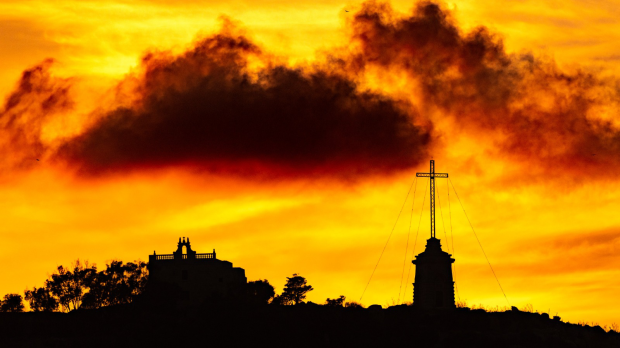This article is co-authored by Jean Pierre Fava (Manager of Faith Tourism within the Malta Tourism Authority) and Ivana Farrugia (Chief Restoration Architect & Civil Engineer at the Restoration Directorate [Malta])
The American poet Emily Elizabeth Dickinson (December 10, 1830 – May 15, 1886) wrote, “Luck is not chance, it’s toil; fortune’s expensive smile is earned.”
This maxim fits very well with the history of the Chapel of the Annunciation built on Malta’s highest point, on the outskirts of Siġġiewi. Hit by earthquakes throughout the centuries, this little chapel had to be rebuilt several times. The fact that it is built right on top of Miġra Ilma fault, caused by underlying geological instability, makes it even more susceptible to damage when quakes strike. However, it never perished thanks to the devotion, resilience, and love of its devotees.
Actually, the Archdiocese and Government of Malta (Restoration Directorate) have recently embarked on a collaborative project that will stabilize and restore the Chapel to its original pristine glory, for centuries to come.
Attesting to the deep centuries-old devotion the Maltese have always had for this church is the frequency it is featured on ancient maps of the Archipelago. It is also evident that the Chapel was beloved by sailors, as it was the first place in Malta that could be seen from the sea – the Annunciation’s Chapel gave them solace from afar. Logically, devotion was deeply entrenched in the hearts of the people of Siġġiewi. In fact, on March 25, the feast day of Mary’s Annunciation, the villagers together with clergy and confraternities went up the hill in procession to the Chapel. We have no certainty about the origin of this custom, but the historian Achille Ferres says that it was done as thanksgiving to God for having freed us from a Moorish invasion in 1429.
Malta is consecrated to Christ the Redeemer
Today, the tiny church is under the shadow of the Laferla Cross, more commonly known as Is-Salib Tal-Għolja (The Cross of the Hill), erected September 27, 1903.
Fr. Paul Laferla of Siggiewi first had the idea of setting up an outdoor Via Crucis along the rugged slope of Tal-Għolja. He was a great devotee of the Passion of the Lord and had often desired to see that Good Friday was celebrated in his parish with a procession containing various statues of the Via Crucis, as was being done in other villages and towns. However, he opted for a less ambitious project, possibly because Fr. Paul himself and the rest of the village decided to use a substantial amount of the capital raised on other prioities the village had – for instance, building the main dome of the Siggiewi Parish Church dedicated to Saint Nicholas.
So, the idea of having a whole set of Passion statues was dropped and instead it was unanimously agreed, by the clergy and the people, to erect five life-size statues sculptured in local stone along the path leading to Tal-Għolja.
The first statue, representing Our Lady of Sorrows, was placed near St.Theodora Cemetery at the foot of the hill. The next one, further uphill, depicts Christ and the Angel in the Garden of Olives, followed by effigies of the Flogging, the Crowning with Thorns, and the Carrying the Cross.
The solitary colossal Laferla Cross perches majestically on the eastern edge of the hill. The completion of Fr. Laferla’s project coincided with the turn of the 20th century when Catholic countries all over the world were joining Pope Leo XIII in the consecration of the new century to Christ the Redeemer. It was thus considered opportune to raise the Sign of the Redeemer on Malta’s highest point – to show unequivocally that the Maltese believed in Christ as the Savior of Mankind.
So, on this spot we find representations of the “beginning” and “end” of Christ’s life on Earth – The Chapel of the Annunciation (His Conception) and His Passing on the Cross.
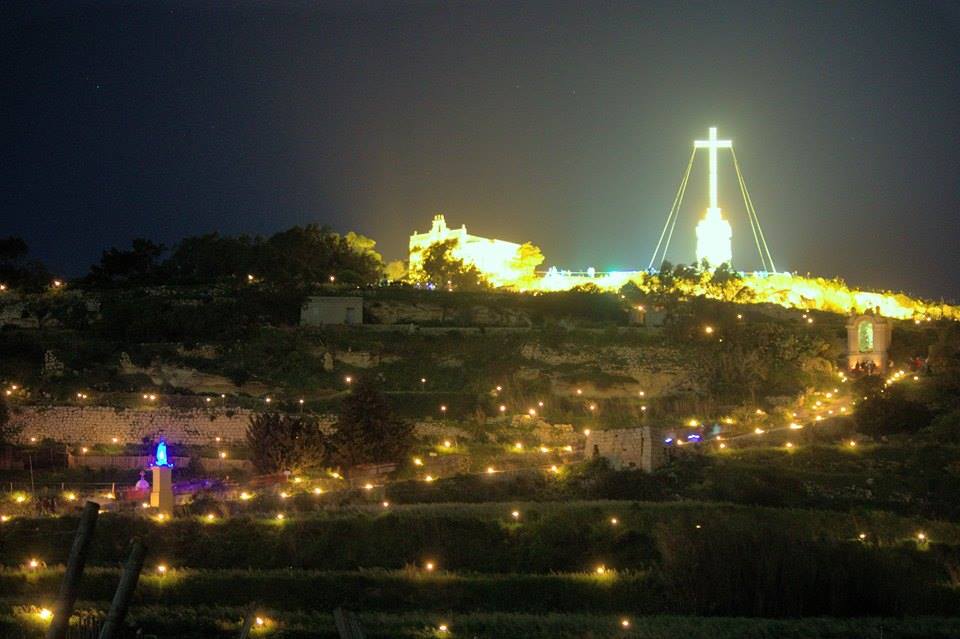
Maltese torches for the Triduum
Every year, the Siġġiewi Local Council illuminates the hill using Maltese torches (fjakkoli) on the evenings of Maundy Thursday, Good Friday, and Holy Saturday. The initiative originated in 1993, when fjakkoli were placed along the footpath leading to the Salib ta’ l’Għolja. The initiative proved very popular and over the years the event has grown to include the lighting of the Siġġiewi side of the hill, the church parvis and the rooftops of houses surrounding the parish square. From one evening, the event was also extended to three evenings.
These activities were stopped due to Covid 19 restrictions, but it is envisaged that they will resume once the stabilization and restoration works are completed – end of 2024 if everything goes according to plan. During the next Holy Week, the Siggiewi Parish, Local Council and Band Club (responsible for the local fetsa celebrations) are exploring the possibility of a mofified version of the events, logically excluding all the restricted area due to the safety measures stemming from the stabilization and restoration works.
The origins
The exact year when the first chapel was built is not known, but its origins go back to the 15th century. Don Guljelmu (William) Tonna, Dean of the Cathedral Chapter, commissioned its construction on his land. Don Guljelmu also paid all the annual costs for its maintenance and for expenses related to the feast of the Annunciation. Mgr. Vincenz Borg, one of the leading experts of ecclesiastical history in Malta says that a few years before 1494, Don Guljelmu’s brother, Orlando, who was also his heir, left a field for all the needs of this church.
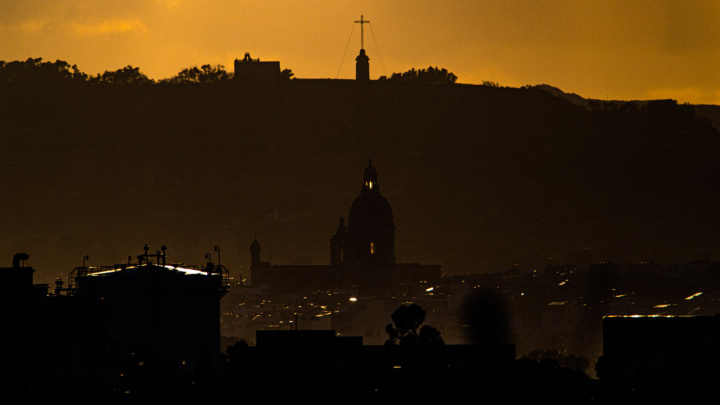
Medieval notarial deeds shed light on the name by which the Tal-Gholja chapel was known. AD 1500 is the year in which it is mentioned for the first time in documents, where the notary Jakbu (Jacob) Zabbara refers to it as Saint Mary of Kemmuna (Sanctae Mariae de la gkemuna). Ta’ Kemmuna being the name by which Tal-Għolja area was known. Probably, etymologically, kemmuna derives from the word kemun, a plant which was commonly cultivated and exported for a long time. Prof. Godfrey Wettinger, another historian, says that it is also possible that the name of Kemmuna derives from the name Kemmun, or from a variant of the Jewish surname Kemmoun, found in North Africa. However, it is certain that from the mid-16th century it also became Santa Marija Tal-Għolja – Saint Mary of the Hill. In his 1575 pastoral visit, Mgr. Pietro Duzina reports that, among other things, it had one altar, wooden doors and a paved floor. When Bishop Caligares visited in 1634, he found that it was in good state and well maintained. It had a titular painting of the Annunciation, holy water fonts, old paintings and was equipped with all the necessary vestments.
Devotion defying cataclysms
The Annunciation Chapel was rebuilt between 1680 and 1681 in the time of Grandmaster Caraffa and Bishop Girolamo Molina. The pastoral visit of 1699 mentions that their coats of arms were placed on the doors leading to the sacristy. Over time the chapel has gone through many repair interventions due to deterioration and damage caused by many factors, including earthquakes, but probably some of its posterior parts, which were built in 1680 – 1681, are still intact to this day, since the coats of arms of Grandmaster Caraffa and Bishop Molina are still visible today.
Again, this little church suffered extensive damage in the earthquake of 1693, and rebuilding started the following year. In his visit of 1754 Bishop de Bussan reported that it was equipped with the necessary things and even had a relic in a silver monstrance. Another tremor hit on October 12, 1856, and some of its structures collapsed, but a plaque at the entrance recalls that thanks to the devotees’ monetary contributions and Rev. Nikola Micallef’s zeal (the procurator) the church was restored as soon as the following year. The plaque also reminds us of another earthquake on September 18, 1923.
The present chapel has a rectangular shape. The external facade is simple and devoid of decorations except for balustrades defining the main facade’s parapet wall, and the belfry from which the bell is missing. The last bell was made in 1873 in a Maltese foundry – Julju Cauchi & Bros. Today it is kept at the Santissima Trinità Pastoral Center in Siġġiewi. An image of the Immaculate Conception and the coat of arms of Pope Pius IX are embossed on this bell.
The chapel also lacks decorations on the inside, except for the frame of the titular painting, carved in stone, and some decoration on the border of the doors leading to the sacristy. The titular painting of the Annunciation is kept in the parish church of Siġġiewi. This painting is a faithful copy of the Annunciation by the renowned Italian artist Guido Reni, which is in the Quirinale in Rome. Its artist is unknown, but he is probably a Maltese painter of the 17th century. The painting is smaller than the original, but the composition and colors are similar. In the last 50 years, the state of the chapel deteriorated significantly, again due to seismic vibrations between 2000 and 2002. The ground began to give way, the walls have wide fissures and the roof fractured. In fact, the chapel was closed due to looming danger of collapse.
The little-great church will be saved again
Recently, some minor restoration attempts have been made to save the Chapel of the Annunciation from collapse, but all was futile. So, this called for a major intervention to save it. Recently an agreement was reached between the Archdiocese of Malta and the Restoration Directorate of the Malta Government.
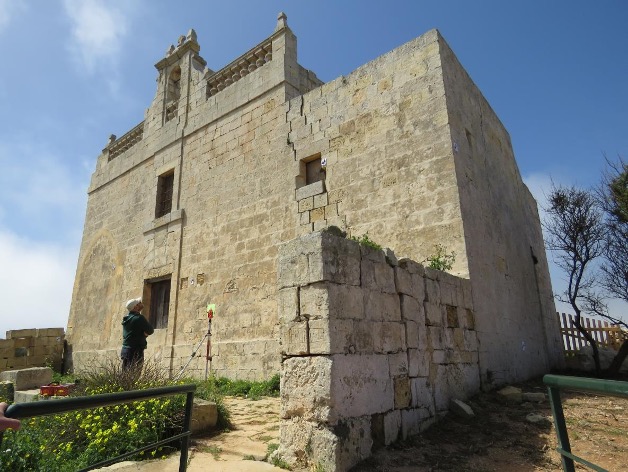
The latter will assist the Archdiocese to restore the Chapel to its original glory. Architect Ivana Farrugia (the undersigned) is leading the project on behalf of the Restoration Directorate. She is assisted by Dr. Adrian Mifsud, the geotechnical consultant commissioned by the Archdiocese of Malta to design and supervise the execution of the underground consolidation works. The Restoration Directorate has taken the responsibility to manage and execute this project from the initial planning phase up till project completion, which will consist of three main phases.
As we have seen the majority of the damage suffered by the Chapel is due to geological movements of its underlying terrain. In fact, in order to ensure that the chapel remains standing for centuries to come, the project will not only see the restoration of the building fabric but will also extend to underground consolidation works to support the chapel on foundations that bypass the unstable ground close to the surface. Indeed, these aspects have been amply detailed in a restoration method statement and geotechnical report prepared jointly by Arch. Farrugia and Dr.Mifsud.
The proposed restoration and underground consolidation interventions have now been also amply developed and detailed, and the project will shortly see the issue of a tender for the appointment of specialized contractors to execute the works. While it is believed that the overall structural consolidation concept will be adhered to, further geological studies may be necessary during the execution of the works, as dictated by the possible unfolding of presently concealed underground conditions. Once the ground-induced overall instability is addressed, the second phase will see the execution of localized reconstruction works on collapsed areas of the chapel’s roof as well as cleaning, consolidation and protection-aimed works on the fabric of the church’s external building envelope. Then, the third phase will kick in. Upon completion of all structural consolidation works and once the external building envelope is rendered watertight, restoration works on the church’s interior will commence. This will include redecoration of walls and laying of flooring slabs – the last lag towards the chapel’s former glory!
Completion of a successful project marks the beginning of another
Completion of restoration works by the Restoration Directorate (in collaboration with the Qrendi Parish and Local Council) on the ancient Shrine of Our Lady of Mercy were inaugurated September 7, 2022. The recaptured magnificence of this Shrine gives a very clear picture of the vivacity we will experience when the “Annunciation project” is also finalized.
Qrendi is just three kilometers away from Siggiewi – the South-East of Malta is dotted with medieval churches and artifacts. The present Church of Our Lady of Mercy (built in the 1650s) occupies the site of a previous chapel dating back to the 13th century (c. 1250). In fact, during the works the Directorate discovered the actual remnants of this 13th-century chapel. In those medieval times, the hamlet was called Hal Lew and was dependent on the Parish of Żurrieq.
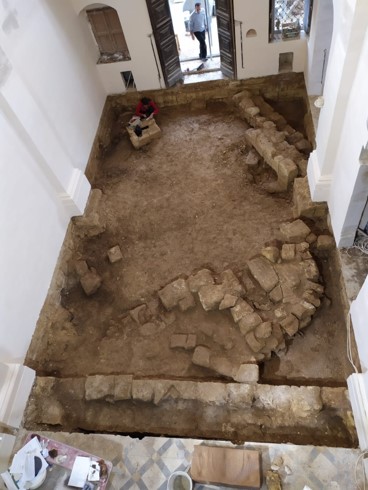
The great devotion shown to Our Lady of Mercy, and graces granted by Her, are attested by the great number of ex–voto paintings donated to the Chapel. The devotion peaked during the leprosy epidemic of 1676. The faithful visited the Chapel from all over the Island seeking help and praying to their Holy Mother to succor them. In 1695, Pope Innocent XII granted a number of indulgences to those who visited the chapel. The pilgrims were so numerous that fresh drinking water had to be provided from a fount near the main portico. In 1679 Bishop Molina referred to Qrendi’s Madonna as “Our Lady of Graces,” due to the torrent of graces granted. The titular painting of the Assumption is the work of the famous artist Giuseppe D’Arena. The Chapel boasts of other works of art, among which we find an imposing Crucifix by Sister Maria de Domenicis and a painting of the Magdalene, the work of Mattia Preti, or one of his students.
~
We would like to thank Fr. Josef Mifsud, Archpriest of Siggiewi Parish of Saint Nicholas, Kappelli Maltin (NGO specializing in Maltese chapels) and Ian Noel Pace for providing information and images for this article.
References
Aquilina P. (1978). Maltese landmarks: is-Salib tal-Għolja. Heritage: an Encyclopedia of Maltese Culture and Civilization, 16, 308-310.
Dimech M. (2008) Il-Kappella ta’ l-Annunzjata fuq ta’ l-Għolja [The Chapel of the Annunciation on The Hill]. San Nikola – Siggiewi – Festa 2008.
Dimech M., Il-knisja tal-Lunzjata, tal-Għolja – fil-limiti tas-Siġġiewi [The church of the Annunciation on The Hill – Limits of Siggiewi]. Kappelli Maltin [accessed between 5th and 11th November, 2022]
Farrugia I. (2019 – 2022) Method Statement for Ground Consolidtaion Works and Restoration of the Annunciation Chapel, Tal-Għolja, Siġġiewi. Restoration Directorte
Maltese torches to illuminate the way to the Laferla Cross. Time of Malta, 25th March, 2013 [accessed between 5th and 11th November, 2022]
